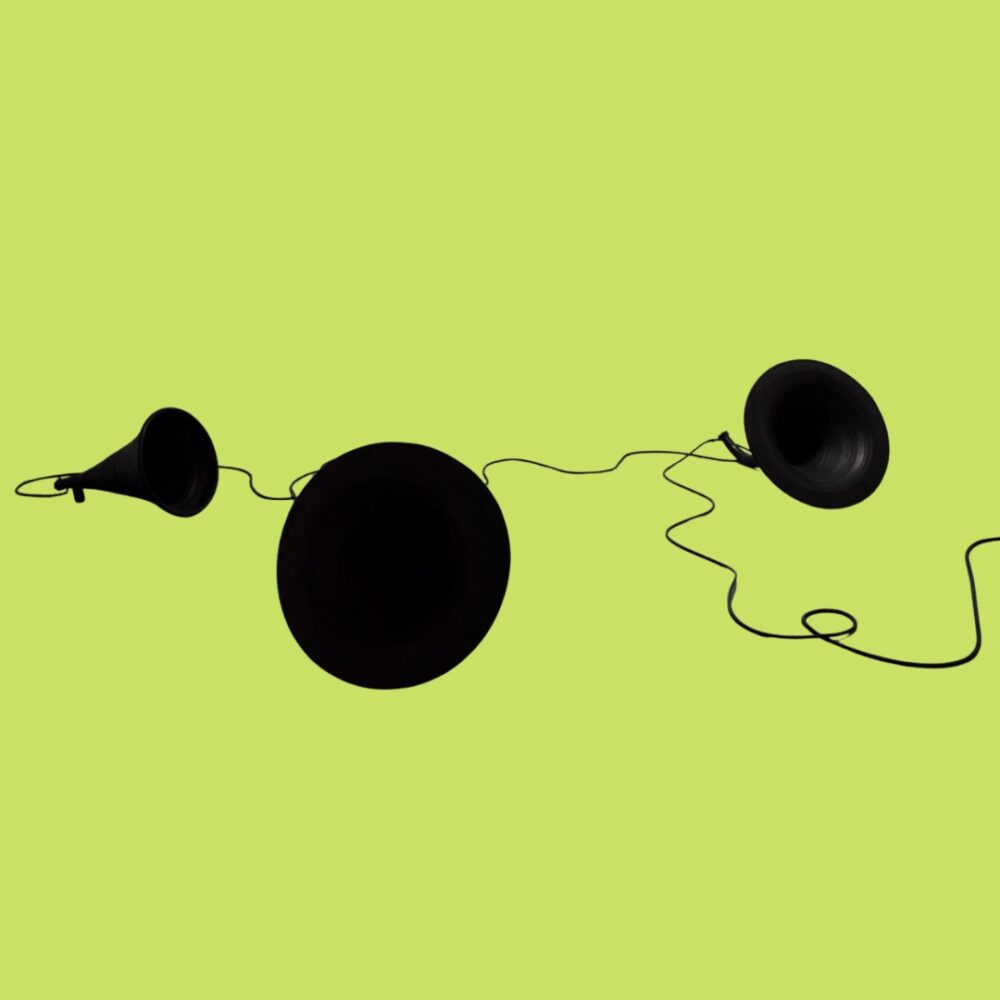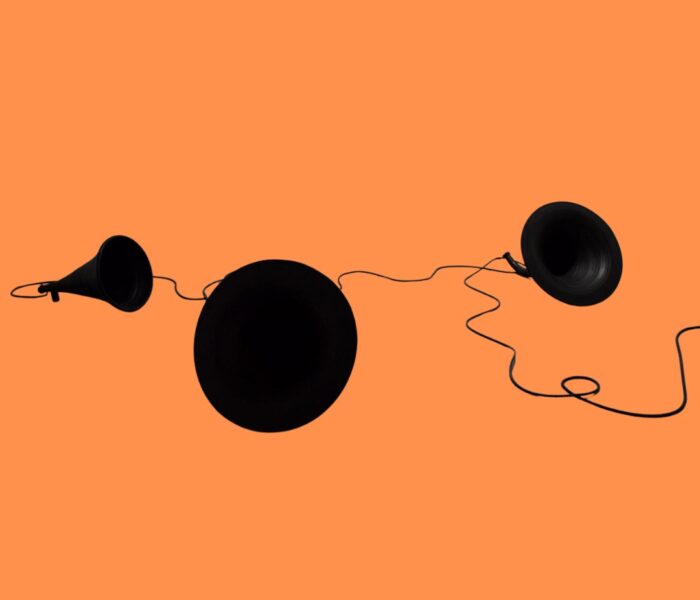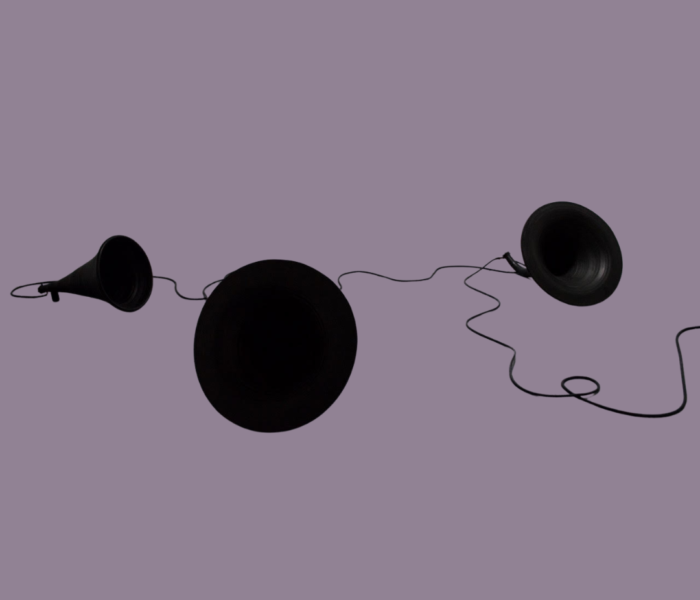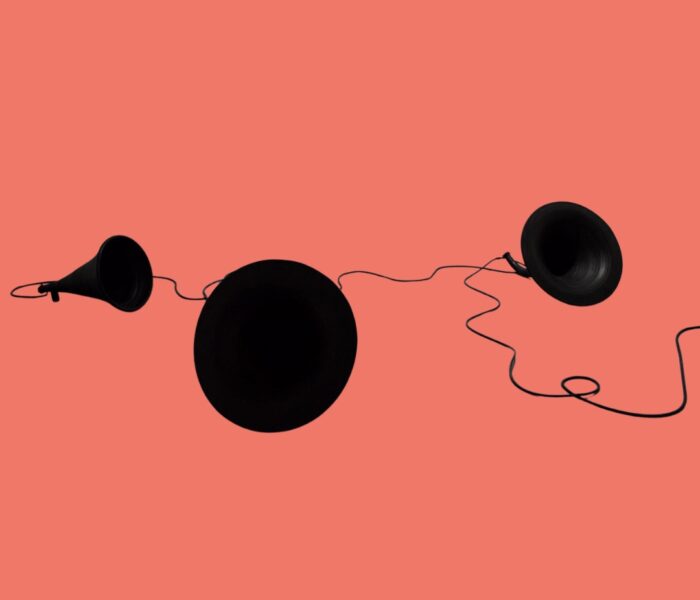Nous avons beaucoup disserté, cogité, discuté, ces dernières semaines sur les genres musicaux, sur la multiplication des genres jusqu’à la confusion, sur les limites du genre, et comme nous le rappelle David Christoffel dans son émission Métaclassique, DÉGENRER, “l’éventail des genres semble interminables”. Y a t’il un genre des genres ou des genres sans genre? Néanmoins, ce sont bien des tendances que l’on retrouve dans nos vies sociales comme dans nos goûts musicaux.
De l’avis de Guillaume Kosmicki
Le dernier projet discographique d’Anthony Laguerre avec G.W. Sok m’a invité à présenter une playlist un peu décalée, en forme d’interrogation. Qu’est-ce donc que cette « musique de création » dont se revendique tout un ensemble de musicien·ne·s, et dont nous nous réclamons, ici, sur Hémisphère son ? Quel est donc le mystérieux facteur commun, la secrète alchimie, ou encore le code ultra-secret qui réunit toutes les musiques présentées sur ce site ? Nous autres, rédacteur·ice·s rassemblé·e·s ici, sommes bien en mal de les définir clairement – et c’est normal ! Quelle est la frontière entre « création » (en vrac : recherche, expérimentation, innovation, ouverture de nouvelles voies, invention de nouveaux langages, de nouveaux gestes), et appartenance confortable à une « famille musicale », prétendument identifiée, type jazz, rock, pop, etc., ou à une « sous-catégorie » tout aussi « familiale », punk, indus, art rock, ou encore à une catégorie large et englobante où l’on peut trouver un peu de tout, « musiques électroniques », « musiques improvisées »… ? Doit-on d’ailleurs forcément appartenir, ou se revendiquer appartenir, à une « famille » un peu « élitiste » pour en être, de cette « musique de création » : musique savante, musique expérimentale, musique contemporaine, musique écrite… ? Je suis loin d’en être sûr. En fait, plus j’y pense, et plus je ne vois qu’une réponse individuelle à cette unité fantasmée de la « musique de création ». Une infinité de musiques ont façonné mon oreille telle qu’elle est à ce jour, entre lesquelles je suis bien en mal de tracer une hiérarchie ou un classement. Elles ont toutes participé à fonder ma vision personnelle de ce que peut être la musique de création, « ma » musique de création. Il en existe autant de définitions que de mélomanes : au-delà de toute tentative de catégorisation, une quantité non négligeable d’émotion personnelle entre dans la balance, une part d’inexplicable qu’on appelle la… vie.
L&S : When The Vowells Falls (Sérotine Records et Tractor Notown – sortie septembre 2022)
L’album When The Vowells Falls de L&S réunit la musique d’Anthony Laguerre et les textes de G.W. Sok. Le premier, batteur, ingénieur du son, et aussi bassiste et guitariste sur le disque, est un touche-à-tout de talent, qu’on connaît par ailleurs pour ses projets Myotis, ses conceptions de spectacles et sa pratique de la musique improvisée. Dans cet album, Anthony Laguerre compose tout, de manière empirique, à partir de nombreuses idées qu’il a rassemblées depuis quinze ans, pour certaines d’entre elles, et il conçoit un écrin parfaitement ajusté à la voix de G.W. Sok, chanteur dont l’organe est reconnaissable entre mille, doublé d’un poète à la grande sensibilité, qui fut longtemps le chanteur du groupe The Ex. Cet album, en collaboration avec les 50 musiciens de l’orchestre Gradus ad Musicam, que Laguerre a dirigés pour l’occasion, revêt parfois certains clichés, certes, il nous emmène sur des territoires déjà arpentés, tout pétri de rock qu’il est. Ce n’est que pour mieux nous ouvrir dans le même temps sur un imaginaire inexploré et nous faire voyager au travers d’un immense champ de territoires en friche. Cet album est un créateur de rêves éveillés. Il n’y a qu’à se laisser prendre, on ne demande pas autre chose à la musique !
John Zorn : Naked City (Elektra records, 1990)
1990 est l’année de parution du disque éponyme du groupe Naked City, un projet baroque créé deux ans plus tôt par le génial John Zorn, entouré des musiciens virtuoses jazz et expérimentaux les plus en vue du moment (encore ces clichés !), Bill Frisell, Wayne Horvitz, Fred Frith, Joey Baron et Yamatsuka Eye. Dans ces compositions fulgurantes, durant parfois quelques secondes et changeant de style instantanément avec une maîtrise époustouflante, Zorn ne se refuse rien, country, blues, rock, indus, jazz, variété… Tout y passe, dans un zapping musical absolument irrésistible : la bande son de la décennie naissante, perfusée de télévision, de CNN, de MTV, d’images violentes du monde, de sitcoms et de publicités, voyant s’écrouler en direct l’ancien Bloc de l’Est qui avait déterminé la conduite de la géopolitique mondiale pendant 45 ans. La pochette, avec un cliché morbide pris par Weegee, photographe de faits divers des années 40, et les pages intérieures du livret, illustrées par le mangaka Suehiro Maruo, érotiques, cruelles et grotesques, annoncent la couleur. Aux côtés du sampling outrancier du rap, de la house music et de la techno naissantes, Naked City a parfaitement incarné le zeitgeist de la fin du siècle.
Nina Hagen : Nina Hagen Band (CBS Records, 1978)
C’est également ce que je ressens, dix ans plus tôt, avec l’exceptionnel talent de la chanteuse Nina Hagen, au travers des deux albums enregistrés avec le Nina Hagen Band (Nina Hagen Band, 1978, et Unbehagen, 1979) : la déliquescence d’une société occidentale dont le modèle débute son déclin, et qui ne s’en rend pas encore compte, le début d’une crise écologique sans précédent, le développement d’une autre crise économique qui va amener à l’effondrement de l’URSS et du Pacte de Varsovie (Nina Hagen est née en RDA), la fin d’une idée de la modernité héritée des Lumières, la foi dans le progrès et le développement de l’humanité. La musique est capable de dire tout ça en filigrane, sans avoir à l’exprimer directement, dans un somptueux « No Futur », une « apocalypse joyeuse » comme on a pu le dire d’une Vienne, alors capitale d’un Empire finissant au début du XXe siècle, rayonnant de ses derniers éclats. Tout virtuose et inventif qu’est son groupe (et il l’est !), la présence de la voix de Nina Hagen les fait disparaître instantanément par ses capacités, sa puissance, sa folie et son aura. Nina Hagen est capable de nous faire croire dur comme fer que le rock a toujours été allemand.
Les découvertes d’Anne Montaron
Joris Rühl, clarinette & le Quatuor Umlaut : Calques, de Morton Feldman et Carl Naegelen (Umlaut Records- sortie mai 2022).
Le collectif Umlaut est sans doute l’un des plus inventifs et originaux de la scène française. Il a son double en Allemagne (Berlin), il a son label, son festival, et son quatuor. Quelle merveille que cet album Calques paru sur le label Umlaut records et qui emprunte son nom à la composition pour clarinette et quatuor de Karl Naegelen, gravée ici dans une version somptueuse !
Par un jeu de miroir – ou de calques – on trouve associé à cette création récente de Naegelen, musicien-membre de Umlaut, le quintette pour clarinette et quatuor de l’Américain Morton Feldman, et l’on comprend pourquoi : les deux oeuvres sont deux façons d’envisager la relation entre le son de la clarinette et du quatuor à cordes, de jouer sur les timbres et plus encore sur les plans, les oppositions, ou au contraire la fusion des instruments.
Fanny Vicens : Turn on, tune in, drop out – Works for accordion and electronics (Éole records – sortie novembre 2021)
De ce deuxième album solo paru cinq ans après le premier, Schrift (label Stradivarius), l’accordéoniste dit elle-même qu’il convie à une expérience psychédélique, à cause sans doute des jeux de plan et d’irisation apportés par l’électronique. Danger ! Cet album est hypnotisant, au point de pouvoir l’écouter “en boucle” sans se lasser… On reconnaît dans cet album le savoir-faire de l’accordéoniste à construire un programme, à jouer sur la complémentarité des atmosphères. Fanny Vicens n’en finit pas de nous charmer, de nous envoûter par sa maîtrise et sa musicalité, son intelligence avec le “texte”. Laissez-vous donc emporter – comme je l’ai été – par cette promenade psychédélique sur les terres poétiques d’Aurélio Edler Copes, de Pierre Jodlowski, Mayu Hirano, Carlos de Castellaranu, Jérôme Combier, Nuria Gimenez-Comas et Alexander Vert !
Duo Kristoff K.Roll et Jean-Michel Espitallier : World is a blues – Blues électroacoustiques / Hommage aux exilés (MazetoSquare – sortie mars 2022)
Parce que l’univers de la musique cultive souvent l’abstraction, ou du moins reste extérieur aux expériences de vie de quantité d’humains, parce que nous sommes anéanti.e.s par notre impuissance face aux exilé.e.s qui arrivent tous les jours aux quatre coins du monde, le livre-disque du duo d’art sonore Kristoff K.Roll est essentiel ! Essentiel comme l’est la fresque de Georges Aperghis Migrants créée en septembre dernier au festival Musica. Donner la parole aux exilé.e.s, autrement que dans un flash d’information ou des chiffres. Faire de leur parole une musique, une création, poétique et polyglotte. Rendre aux déraciné.e.s leurs langues, leurs rêves, leurs peurs, leur humanité. C’est ce à quoi s’emploient les Kristoff K.Roll sur fond de blues, la musique de celles et ceux qui se sont retrouvé.e.s sur les routes suite à la grande crue du Mississippi et la terrible inondation de 1927. Télescopage poétique, électroacoustique (magie du tissage sonore !) entre la musique de ces bluesmen.women d’autrefois et les récits d’exilé.e.s d’aujourd’hui, saisis par les micros du duo Kristoff K.Roll à la Jungle de Calais, contre-pointés par les textes et la voix de Jean-Michel Espitalier, le tout baigné, plongé littéralement dans les improvisations de quelques poètes du son : Daunik Lazro, Patrice Soletti, Claire Bergerault, Christian Pruvost, Carole Rieussec …
Et les coups de coeur de Suzanne Gervais
Kaija Saariaho : Laterna Magica (Ondine Records, 2011)
Le fantastique et le merveilleux inspirent la compositrice finlandaise Kaija Saariaho qui livre, en 2009, cette Lanterne magique, page symphonique de 20 minutes dans la lignée des poèmes symphoniques impressionniste !
Debussy : Bruyères par Vikingur Olafsson au piano (Deutsche Grammophon, 2020)
La beauté et l’émotion de cet enregistrement artisanal, “home session” apportent comme un supplément d’âme à cette page debussyste, extrait du deuxième livre des fameux préludes. De quoi redécouvrir cette pièce “doucement expressive” aux allures de haïku.
Elżbieta Sikora : Cadenza pour Alexis Descharmes au violoncelle
La compositrice polonaise Elżbieta Sikora, installée en France, est l’auteure d’une catalogue riche et éclectique : musique électronique, plusieurs œuvres de musique de chambre, des pages pour orchestre, pour voix, ainsi que des opéras. Cette page soliste explore le lyrisme et les graves de l’instrument.
DÉGENRER, émission Métaclassique, à écouter sur Hémisphère son



)



